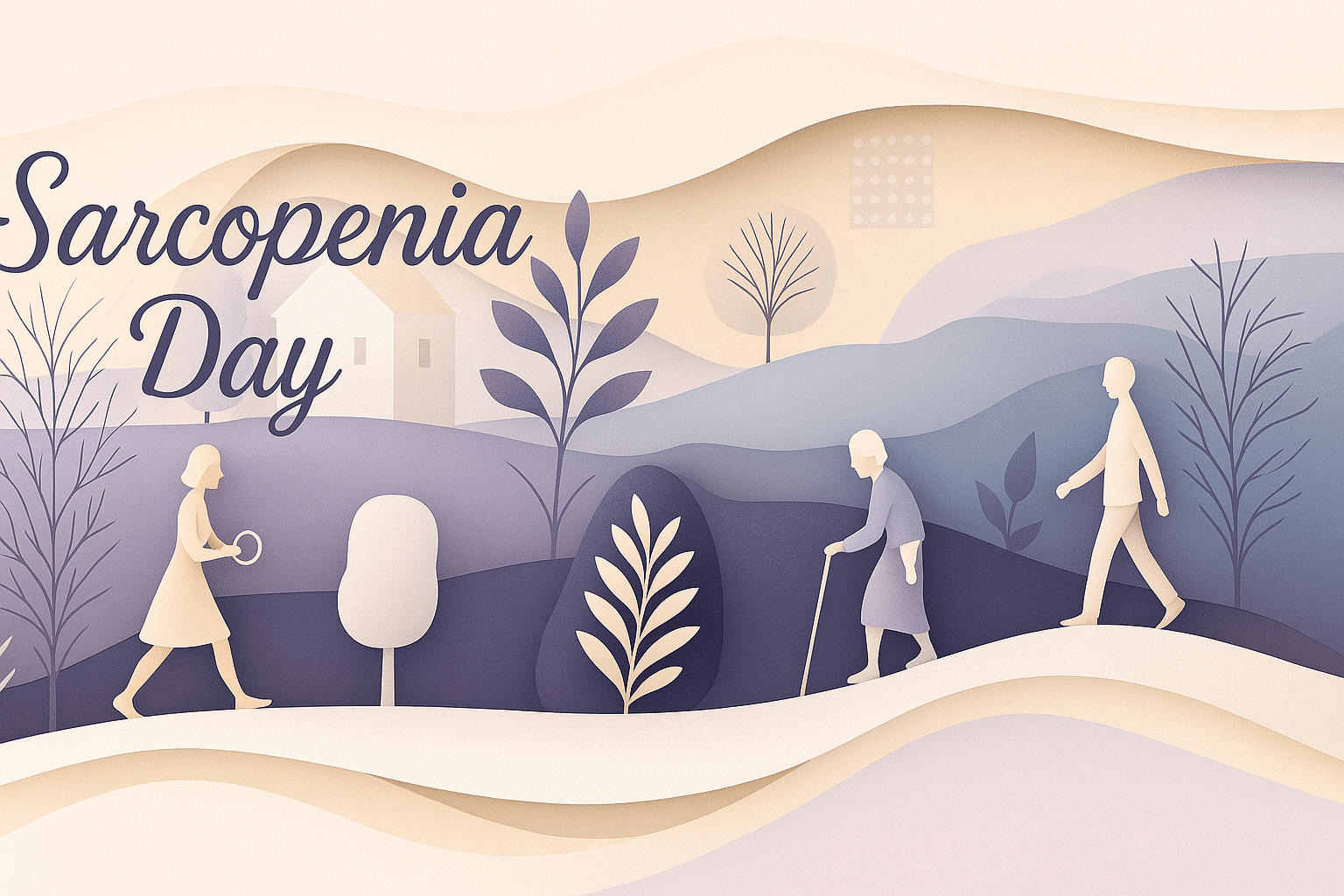What is World Sarcopenia Day?
World Sarcopenia Day is held every year on July 4. The day is dedicated to raising awareness about sarcopenia, a progressive loss of skeletal muscle mass and strength, mostly associated with aging. This condition can lead to physical frailty, reduced mobility, falls, and loss of independence in older adults.
The purpose of this day is to educate the public about the early signs of sarcopenia and promote practical steps to prevent or delay it. It also supports research, screening initiatives, and international dialogue around aging and muscle health.
History and Origin
World Sarcopenia Day was launched by the Global Leadership Initiative on Sarcopenia (GLIS), a coalition of researchers and healthcare experts who collaborate to standardize definitions and guidelines for diagnosis and treatment. July 4 was chosen to align with the release of several key position papers and to create a consistent annual moment of global attention.
Although sarcopenia was first described in the late 1980s, the medical community has only recently begun to treat it as a standalone condition. The World Health Organization included sarcopenia in its official disease classification system in 2016. This formal recognition helped accelerate funding, research, and outreach.
World Sarcopenia Day brings this knowledge to a wider audience. Campaigns now appear in hospitals, health centers, universities, and community programs. The day also serves as a reminder that muscle loss is not inevitable. With the right strategies, it can be slowed or even reversed.
Who participates in World Sarcopenia Day?
- Medical professionals: Lead public screenings, share guidance, and promote early diagnosis.
- Older adults: Engage in educational events, fitness workshops, or health checkups.
- Caregivers and family members: Learn about signs, support options, and home-based interventions.
- Health organizations: Host conferences and awareness campaigns targeting aging populations.
- Rehabilitation specialists: Provide strength training programs and personalized movement plans.
Slogans and Themes
Common slogans include “Stay Strong with Age,” “Muscle Matters,” and “Add Life to Years.” Themes often focus on muscle as a key to independence, resilience, and quality of life. Recent campaigns highlight the importance of early detection and the link between nutrition and muscle strength.
The day’s message is always proactive: sarcopenia is manageable, but only if recognized in time. Campaigns also aim to dispel myths, such as the belief that weakness is a normal part of aging.
Colors, Symbols, and Patterns
Colors
- Orange: Represents movement, vitality, and action.
- Grey: Associated with aging and medical awareness.
- Teal: Used for its calming presence and link to wellness.
Symbols
- Dumbbells: Signify strength and resistance training.
- Muscle diagrams: Visual tools that emphasize anatomy and loss prevention.
- Walking stick with a cross-out: Symbolizes the goal of preventing mobility loss.
Patterns
- Muscle fiber graphics: Show healthy versus declining muscle structure.
- Step-by-step icons: Used to teach exercise, diet, and lifestyle changes.
- Circular flow charts: Illustrate prevention and intervention cycles.
Most Used Hashtags
- #WorldSarcopeniaDay
- #MuscleMatters
- #FightSarcopenia
- #HealthyMuscles
- #StayStrong
How do you celebrate World Sarcopenia Day?
- Get screened: Take part in a local or virtual assessment to measure grip strength or walking speed.
- Join an awareness event: Attend a lecture or webinar about sarcopenia and active aging.
- Start strength training: Begin a home or gym program with simple resistance exercises.
- Revise your nutrition: Focus on foods rich in protein, calcium, and vitamin D.
- Share your story: Use social media or local platforms to raise awareness and reduce stigma.
Why is World Sarcopenia Day important?
World Sarcopenia Day is important because muscle loss in older adults is often ignored until it causes real harm. Many assume it’s just part of aging, but sarcopenia is a medical condition that can be treated. Early signs include slower walking, difficulty standing, or general fatigue.
Raising awareness helps people recognize the risks and act before serious issues arise. It also empowers older adults to stay active and independent for as long as possible. The day encourages not only personal care, but also systemic changes in healthcare, policy, and public attitudes.
Muscle strength is central to nearly every activity of daily life. From lifting a bag of groceries to getting out of bed, it all depends on healthy muscles. That’s why World Sarcopenia Day matters;it brings visibility to a problem many people face but few understand.
Features
July 4: Sarcopenia Day
Why do you keep falling for the same type?
Read the article Lovemaps: the hidden blueprint of our love.

